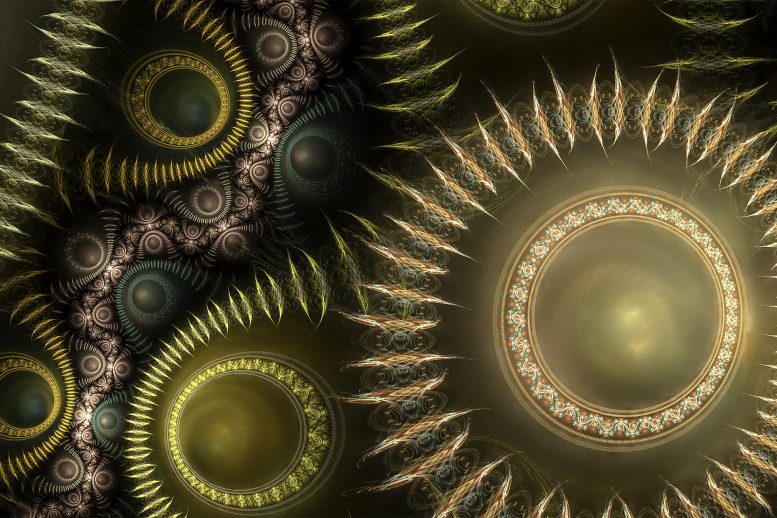
Time crystals sound like something out of science fiction, but they may be the next major leap in quantum network research. A team based in Japan has proposed a method to use time crystals to simulate massive networks with very little computing power.
They published their results on October 16, 2020, Science Advances.
First theorized in 2012 and observed in 2017, time crystals are arrangements of matter that repeats in time. Normal crystals, such as diamonds or salt, repeat their atomic self-organization in space, but do not show any regularity in time. Time crystals self-organize and repeat their patterns in time, meaning their structure changes periodically as time progresses.
“The exploration of time crystals is a very active field of research and several varied experimental realizations have been achieved,” said paper author Kae Nemoto, professor in the principles of informatics research division at the National Institute of Informatics. “Yet an intuitive and complete insight of the nature of time crystals and their characterization, as well as a set of proposed applications, is lacking. In this paper, we provide new tools based on graph theory and statistical mechanics to fill this gap.”
The video begins with a perfect time crystal. When time goes on, the parameter of the quantum system changes so that the time crystal starts to melt. We can see how much the time crystal has melted by looking at the network. It is interesting to see that the time crystal does not melt equally, some parts are melting faster than others. Towards the end of the video, we can see that the time crystal has completely melted. Credit: Global Research Center for Quantum Information Science, the National Institute of Informatics in Japan
Nemoto and her team specifically examined how the quantum nature of time crystals — how they shift from moment to moment in a predictable, repeating pattern — can be used to simulate large, specialized networks, such as communication systems or artificial intelligence.
“In the classical world, this would be impossible as it would require a huge amount of computing resources,” said Marta Estarellas, one of the first authors of the paper from the National Institute of Informatics. “We are not only bringing a new method to represent and understand quantum processes, but also a different way to look at quantum computers.”
Quantum computers can store and manipulate multiple states of information, meaning they can process huge data sets with relatively little power and time by solving several potential outcomes at the same time, rather than one by one like classical computers.
“Can we use this network representation and its tools to understand complex quantum systems and their phenomena, as well as identify applications?” Nemoto asked. “In this work, we show the answer is yes.”
The researchers plan to explore different quantum systems using time crystals after their approach is experimentally tested. With this information, their goal is to propose real applications for embedding exponentially large complex networks in a few qubits, or quantum bits.
“Using this method with several qubits, one could simulate a complex network the size of the entire worldwide internet,” Nemoto said.
Reference: “Simulating complex quantum networks with time crystals” by M. P. Estarellas, T. Osada, V. M. Bastidas, B. Renoust, K. Sanaka, W. J. Munro and K. Nemoto, 16 October 2020, Science Advances.
DOI: 10.1126/sciadv.aay8892
This work was supported in part by the Japanese Ministry of Education, Culture, Sports, Science and Technology Quantum Leap Flagship Program, the Japan Science and Technology Agency, the Japan Society for the Promotion of Science and the John Templeton Foundation.
Other contributors include T. Osada, B. Renoust and W.J. Munro, all of whom are affiliated with the National Institute of Informatics. Contributors K. Sanaka and Osada are affiliated with the Tokyo University of Science. Contributors V.M. Bastidas and Munro are with the NTT Basic Research Laboratories & Research Center for Theoretical Quantum Physics. Contributor B. Renoust is with the Osaka University Institute for Datability Science. Renoust and Nemoto are also with the Japanese-French Laboratory for Informatics.
"network" - Google News
October 26, 2020 at 02:17AM
https://ift.tt/2Tod849
Time Crystals May Be the Next Major Leap in Quantum Network Research - SciTechDaily
"network" - Google News
https://ift.tt/2v9ojEM
https://ift.tt/2KVQLik
Bagikan Berita Ini














0 Response to "Time Crystals May Be the Next Major Leap in Quantum Network Research - SciTechDaily"
Post a Comment